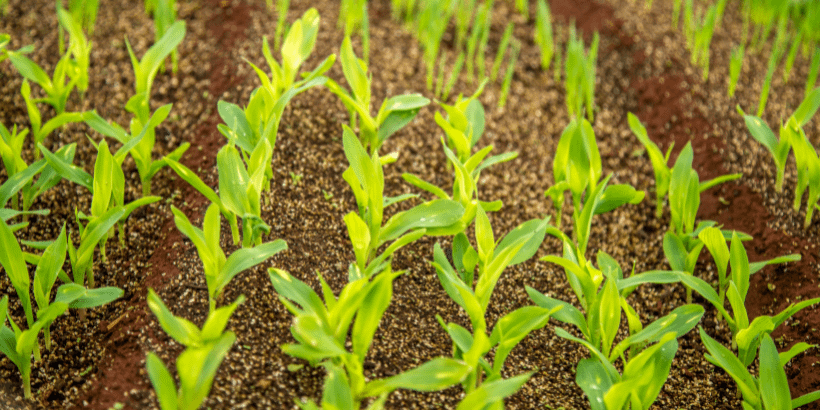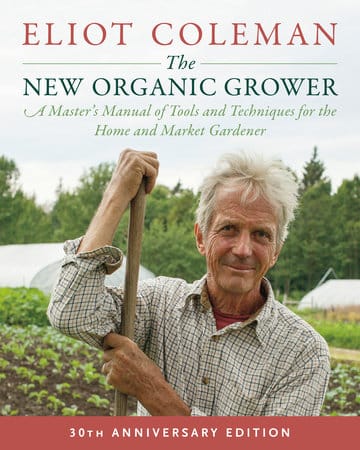Get Started With Tillage: Choosing the Right Crops

Interested in getting started with tillage? All you’ll need is a spot, some soil, and some crops to make your vision a reality.
But deciding exactly which crops should make the cut might actually take more work than you think. When it comes to deciding on which crops to till, it’s important to keep in mind both your personal level of commitment and the conditions of the environment you’re in.
The following is an excerpt from The Organic Grain Grower by Jack Lazor. It has been adapted for the web.
Getting To Know Your Soil: Ready for Tillage?
You’ve found a plot of land next to your garden or out in your back pasture. What’s next?
Make some final determinations as to soil type and drainage potential. A few simple observations will tell you everything you need to know—grab a shovel and dig a small hole, and feel the dirt with your hands. Sandy soils will have a gritty texture that will abrade your skin as you rub them between your fingers. Silts are silk-like and will smear when pressed against a hard surface. Clay soils will be more difficult to penetrate with your shovel and tend to clump up into little balls, especially when they are damp. Clay is quite fragile and easily damaged by working it with tillage equipment when it is wet. The end result will be a collection of hard little balls that are almost impossible to work into a fine seedbed—and once the tilth of a clay soil is destroyed, it can take years to get it back. Tillage rule number one is to never work a field if it is excessively wet. To determine a soil’s suitability for tillage, try this simple procedure. Take a handful of soil, squeeze it into a ball, and then relax your grip. If the ball of dirt falls apart, the ground is ready for the disc harrow or the field cultivator. If the ball remains round and intact, wait a little longer until things dry out a bit.

The NRCS will also be able to provide you with an accompanying soils sheet for each particular classification on your land. These information sheets describe the physical characteristics and drainage as well as crop suitability for each particular soil type. Your county soil conservationist will be able to interpret this soils sheet and provide you with additional information and advice about growing grain on your particular piece of land. The FSA office is the USDA’s outreach arm stretching into your community, and is the same outfit that administers crop subsidies and other federal agricultural programs. I have found lots of help here and have collected my fair share of farm payments, as well, but the paperwork involved is daunting and seems a bit overdone. It’s also important to remember that what the government giveth, it also taketh away; every USDA farm payment for crops or conservation practices is taxable income and must be declared. Despite this reality, I would recommend an information-gathering expedition to your local county FSA office.
Choose Your Crops: What Will Work For Your Land?
Next, let’s consider what to grow. Cereals like oats, wheat, barley, triticale, rye, and buckwheat are all seeded in solid blocks, while crops like corn, beans, and sunflowers are planted in rows. Row crops offer an easier starting place for the homesteader or gardener because planting, cultivation, and harvesting can all be performed with hand tools and garden tillage can be accomplished with a rototiller or a spading fork. Seedbed preparation requires only a garden rake; planting is done with a hoe; and weeds can be removed with a rototiller, a hoe, or a hand-push-type cultivator. At harvest, ears of corn can be handpicked into a bushel basket and whole bean plants pulled up by the roots. Cereal grains, on the other hand, are a bit less straightforward to grow. These small grains can certainly be hand-scattered and raked into a well-prepared garden soil, but this process is more tedious and much less exacting than planting corn and beans in rows with the use of a hoe. Some homesteaders plant crops like wheat in very narrow four- to six-inch rows with the help of a hand-pushed garden seeder like a Planet Jr. or an Earthway. Each particular type of grain will be discussed in much more detail in later chapters of this book. Suffice it to say at this point that row-planted crops like corn and beans offer far fewer challenges to the beginner with limited time, tools, and experience.

For the best success, spring wheat needs to be planted as soon as possible in the very early spring: Early planting ensures good weed suppression and a higher yield. If the ground is wet, however, early seeding is out of the question. Winter wheat usually goes in the ground during the third week of September when the earth is much drier. Weed control is much more of a sure thing with a winter grain. The crop germinates in late September and makes good growth in October and early November. Weeds will germinate, but not survive the winter. The wheat itself grows into dormancy and wakes up the following spring already four to six inches tall and ready to begin growing immediately, which gives it a very favorable jump start in the spring. In fact, crop yields can be double those of spring wheat, and weeds are generally not a problem. Spring-planted wheats do much better on lighter, better-drained soils where planting can take place when there is still snow on the edges of a field. In most cases, soil type and drainage will determine whether a spring or winter grain is sown.
Recommended Reads
Recent Articles
Aside from the sheer pleasure of telling your friends, straight-faced, that you maintain your garden using something called a “chicken tractor,” there are a slew of other benefits to working the land with a few of your animal friends. Getting rid of pests without chemicals, for one; letting them do the work of weeding and…
Read MoreIf the idea of running a vegetable farm sounds daunting, you’re not alone. What can you do to simplify techniques and reduce expenses? Where do you even begin?
Read MoreWhen you’re walking around the grocery store looking at the vegetables, it’s probably hard to imagine that a century ago there was twice the amount of options.
Read MoreIf you love tomatoes, you probably already know just how many varieties of these summertime staples there are. But do you know what makes each one unique?
Read MoreAdding the long game of trees to your system results in a deeper and more reliable, resilient and profound presence to your annual vegetable production.
Read More








